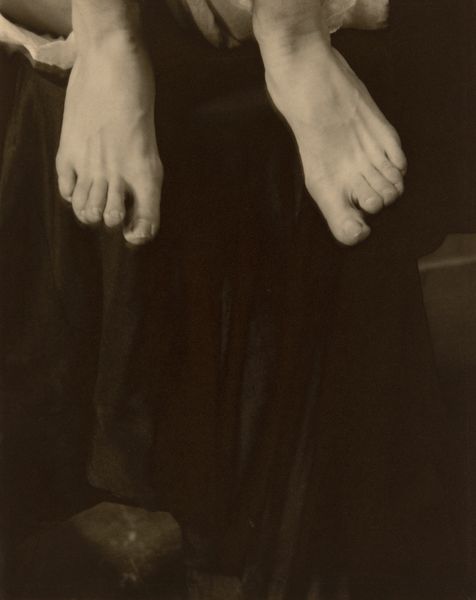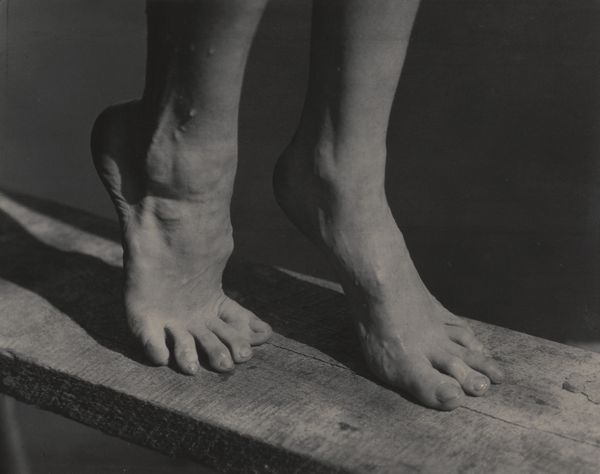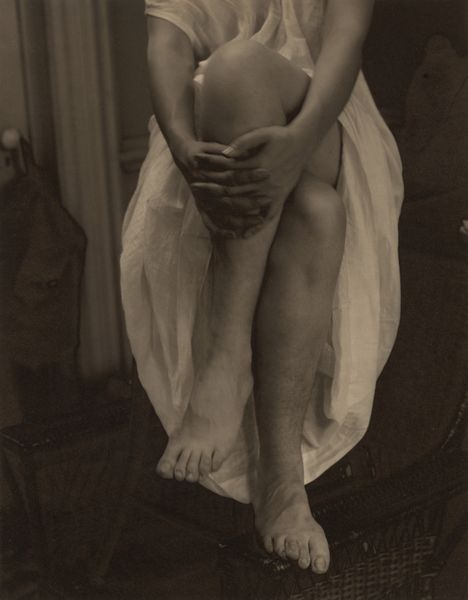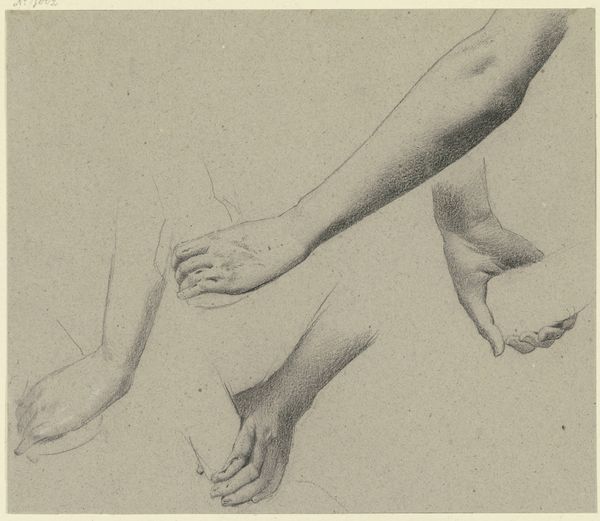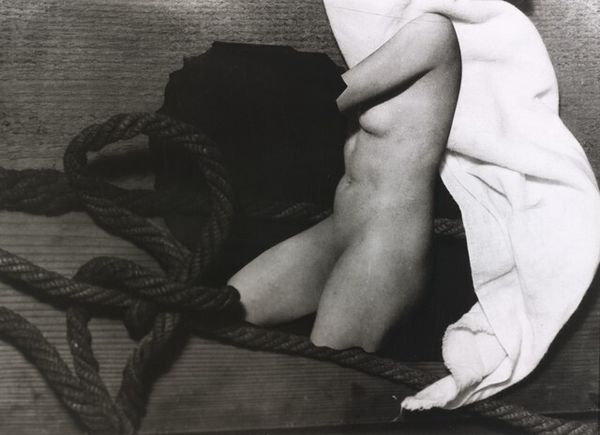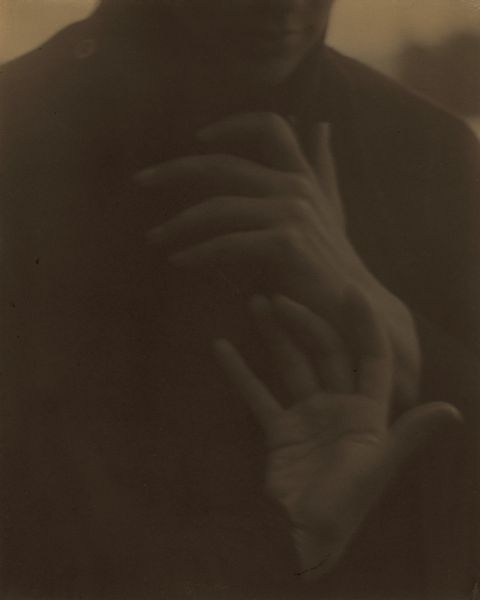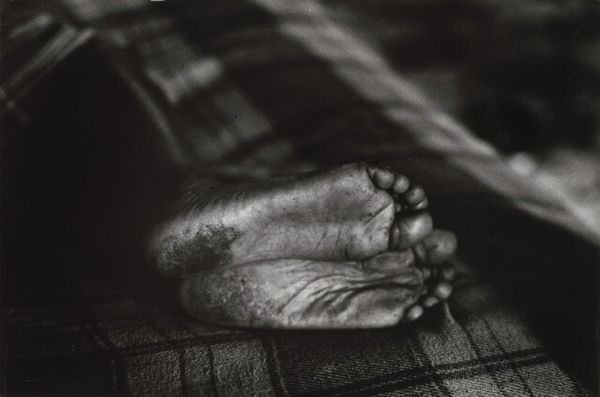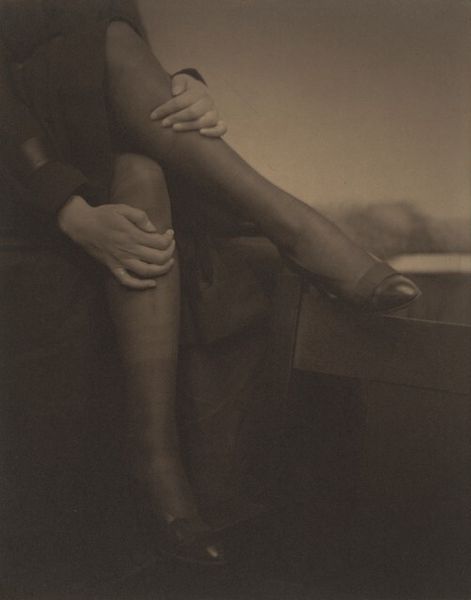
print, photography
#
portrait
#
figure photograph
#
pictorialism
# print
#
photography
#
nude
#
modernism
Dimensions: image: 23.9 x 19.1 cm (9 7/16 x 7 1/2 in.) sheet: 24.9 x 20 cm (9 13/16 x 7 7/8 in.) mat: 55.1 x 45.1 cm (21 11/16 x 17 3/4 in.)
Copyright: National Gallery of Art: CC0 1.0
Editor: We're looking at Alfred Stieglitz's photograph, "Georgia O'Keeffe—Feet," created in 1918. It's a print, and, well, it's a very intimate image. It almost feels like a fragmented portrait. What catches your eye? Curator: My attention is immediately drawn to the materials: the photographic print itself, and how Stieglitz's choices during production impact its interpretation. Consider the paper he used, the darkroom techniques, the printing process; it was all carefully controlled by Stieglitz, positioning photography as fine art, a deliberate rejection of its mass production potential. Editor: That's interesting. So you're saying the way it was made is key? Curator: Absolutely. Think about the societal norms of the time. Why choose to photograph feet? And why present it in this almost classical nude style? It challenges our understanding of both the photographic medium and the human form. Stieglitz’s act of taking and manipulating these images involves a degree of authorship, appropriating O’Keeffe's likeness for his own artistic, and perhaps, personal narrative. How do you see the social context influencing its meaning? Editor: I hadn’t really thought about it like that, focusing on his choices rather than simply the image itself. I suppose it raises questions about artistic control and representation. Curator: Precisely. By understanding the material conditions and social environment surrounding this image, we move beyond simple aesthetics and begin to unpack deeper meanings about the relationships between artist, model, and audience. Editor: I can definitely appreciate the layers revealed by considering the material and context now. Curator: Indeed. It forces us to confront the labour and power dynamics inherent in the creation and consumption of art.
Comments
No comments
Be the first to comment and join the conversation on the ultimate creative platform.
